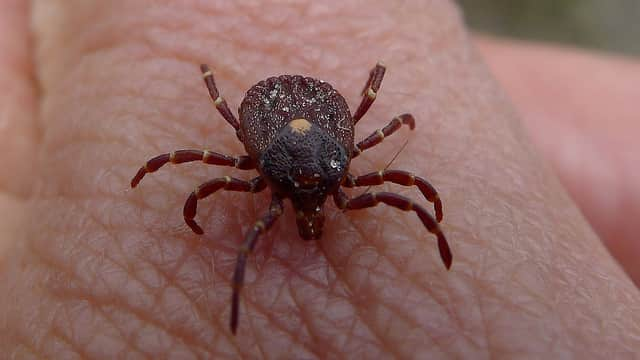Number of Tick-borne Diseases Increasing
OutdoorHub Contributors 09.12.12

This article was written by Maryn McKenna and is republished with permission.
This week I’m at ICAAC (the Interscience Conference on Antimicrobial Agents and Chemotherapy), a massive infectious-disease and drugs meeting that is sponsored every year by the American Society for Microbiology. ICAAC is an unabashed scary-disease geekgasm, the kind of meeting at which the editor of a major journal tweets from one room, “‘Modern medicine will come to a halt’ in India because of catastrophic multi-drug resistance” while a microbiologist alerts from another: “Rat lungworm traced to salads on a Caribbean cruise. Snails had apparently gotten to the greens.”
Good times.
Meanwhile, I was learning more about ticks.
The news last week was of a new tick-borne illness recently identified in Missouri, and of how it demonstrates the way that tick-borne infections are under-appreciated by medicine and public health, and even more by the general public. In addition to the new Heartland virus, I mentioned two other tick-borne diseases that had been identified in the past two years.
It turns out, though, that was an under-count. The news Sunday from ICAAC is that tick-related illnesses are even more common than they appear.
Dr. Bobbi Pritt, the laboratory director of the Mayo Clinic in Rochester, Minn., unfolded a disease detective story that started in the summer of 2009 with two men who liked the outdoors, and two astute lab technicians. The men, a 54-year-old and a 23-year-old who had both been out in the woods in Wisconsin, had fevers, fatigue and headaches, and a history of tick bites; the 23-year-old, who had received a lung transplant for cystic fibrosis, was more seriously ill and had to be hospitalized. The technicians noted that the men’s disease was most like erlichiosis — but the tick that carries that tick-borne illness is not present in the upper Midwest. Months later — after the Centers for Disease Control and Prevention had sent a pair of investigators, after involving epidemiologists from the US military who had been studying illness in the residents of bases nationwide, after trapping mice and grinding up hundreds of ticks — the group realized they had found a new tick-borne illness. It was an Erlichia – though it is so new that it does not yet have a name — but it was carried by a tick species that had never been associated with that organism before. Forty-two people have been sickened by it so far. “This is not a benign disease,” Pritt warned.
Meanwhile, Dr. Peter Krause, a senior research scientist at the Yale schools of medicine and public health, described yet another formerly unknown tick-borne disease, one that is more like Lyme disease but is caused by a newly identified relative of the Lyme organism called Borrelia miyamotoi. The illness that results is a severe and sometimes fatal relapsing fever. But unlike other relapsing fevers already known to occur in the western United States, this one is carried by a different range of tick species: the “hard-bodied” ticks that are primarily in the eastern US and are responsible for transmitting Lyme, erlichiosis and anaplasmosis. So far, Krause said, this new disease has been most studied in humans in Russia — but ticks carrying B. miyamotoi have already been identified in the United States, in ticks and mice in the Northeast and upper Midwest.
Then, Dr. Gary Wormser of New York Medical College warned that a third tick-borne illness, deer tick virus — formerly known to affect only deer — is now emerging as a human pathogen. Two cases of encephalitis caused by it have been recorded. Wormser described a third, tragic case that he has not yet published: a 77-year-old man from upstate New York who already had several chronic illnesses was bitten by a tick in October 2010, developed a fever and lethargy a month later, slid into a coma — and died 8 months later, having never regained consciousness.
Finally, Dr. Barbara Herwaldt of the CDC reminded us that, even if these stories frighten you enough to never leave your house, you are still at risk of a tick-borne disease. To date, 159 people — “the tip of the iceberg,” she said — have been diagnosed with the tick-borne illness babesiosis after receiving a blood transfusion. Because of the lag between bite and symptoms, and because the symptoms of babesiosis — like all tick-borne diseases — could be caused by so many other things, infected donors are not successfully screened out by blood banks. And because there is no FDA-approved test for babesiosis — not just a test for blood, but not even a diagnostic test to prove infection in a patient — blood banks and even physicians are unable to say with certainly when someone is a risk and should abstain from donating.
“The bottom line is: There are too many cases; they are still occurring; this is not going away,” she said. “Infected people, and contaminated blood components, can travel much further than ticks can. Donor-screening tests are needed.”
This article originally appeared on Wired.com.

